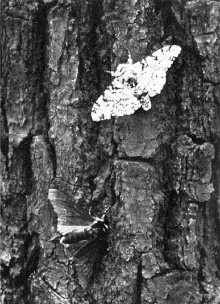Unnatural Selection?
Luke 12:33
“Sell that ye have, and give alms; provide yourselves bags which wax not old, a treasure in the heavens that faileth not, where no thief approacheth, neither moth corrupteth.”
Just about every public school textbook once included the example of the peppered moth. The moth is used as a prime example of natural selection. Supposedly, as the trees in the English countryside began to be covered with coal pollution in the mid 1800s, the light colored tree trunks became darker. The peppered moth exists in two varieties – black and white – and was said to rest on the tree trunks. As the trunks turned  black, the white variety was more easily seen and picked off by the birds, leaving the black variety to multiply. Students are told this is natural selection.
black, the white variety was more easily seen and picked off by the birds, leaving the black variety to multiply. Students are told this is natural selection.
But since the 1980s, numerous studies of moth populations and how they live have called the use of the peppered moth as an example of evolution into serious question. Several additional population studies in polluted and unpolluted forests show little correlation between whether there are lighter or darker moths. After pollution control laws went into effect in England, the population of dark moths decreased in the north but increased in the south! In addition, the nocturnal moths do not rest on the tree trunks during the day, but stay hidden under the branches higher in the tree. In the famous photograph shown in every biology textbook – of a pair of moths resting on a tree – the moths were actually glued to the tree trunks to provide the picture!
Let’s not give away the treasures of the truth of God’s inerrant Word for the false treasure of earthly theories which deny our Creator.
Prayer:
Thank You, Father, that Your saving Word is trustworthy. Amen.
Notes:
Jonathan Wells, Ph.D., “Second Thoughts about Peppered Moths,” April 6, 1999.